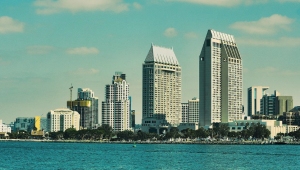 Thinking of moving to San Diego? That’s a great choice since this coastal city has a lot to offer the average resident.
Thinking of moving to San Diego? That’s a great choice since this coastal city has a lot to offer the average resident.
San Diego is the 8th largest city in the US by population and is home to 1.43 million people. The climate is fantastic, not too cold or warm, and temperatures don’t vary much throughout the year. You’ll also find lots of entertainment and attractions suitable for families and kids.
Like every global city, San Diego has its share of challenges. Before finalizing your decision, you may want to take the time to research the day-to-day living experience in this city. Read ahead for some practical things to keep in mind.
The Cost of Living is High
Although the cost of living in San Diego is lower than in cities like Los Angeles and San Francisco, it’s not exactly cheap. You can expect to pay an average rent of $2,989 for a one-bedroom apartment. But, if you want a larger place with two bedrooms, the rent is around $3,736.
A good rule of the thumb is to estimate that you’ll pay no more than 30% of your pre-tax monthly wages on rent. Accordingly, to live comfortably in San Diego, you need an annual income of at least $107,604, which works out to at least $51.73 an hour, assuming you’ll rent a one-bedroom place. Finding a moving company in San Diego is easy, and you can get free quotes before choosing an economical service.
Public Transportation is Expensive
Getting around in San Diego is one of the major challenges of living in the city. Most residents own their cars, and people living in suburbs or neighborhoods where public transportation is not available use options like Uber and Lyft to get around.
If you don’t own a car, expect to pay about $4,900 for using transportation to get to work or go shopping. And that’s the average for a single adult. Families with two adults and a child can expect to spend $11,186. San Diego has a bus and trolley network with plans for extensive expansion in the coming years.
San Diego Sits on a Faultline
When choosing the right location to live, you might want to read about the latest fault zones and applicable state regulations. In case of an earthquake, these zones are at high-risk for surface fault ruptures.
Updated research has identified a belt of land extending from the north of Mission Bay to a three-prong area running through Mission Hills, Old Town, and San Diego International Airport. The risk zone extends all the way to Bankers Hill in the south.
California Has High Taxation Rates
High taxation rates are a major challenge you’ll want to prepare for. The state of California levies some of the highest taxes in the country. Residents of San Diego pay a base sales tax rate of 7.75%.
This charge is in addition to the marginal income tax rate of 13.3%, which can severely dent the final take-home pay. On the flip side, you could find employment in high-paying sectors like the hospitality industry, biotechnology, and the military. Working in the healthcare sector is also a viable proposition.
Despite the challenges, San Diego is a great city to live with museums, beaches, zoos, water parks, and aquariums. Finding both public and private institutions is easy if you intend to move with kids. But, being aware of the downsides helps because you’ll know what to expect and figure out how to get around the possible problems.
Shift Frequency © 2022 – Challenges of Living in
San Diego – Practical Facts to Know
